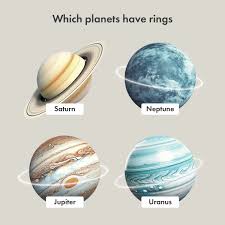Stamp: Milano - Ottagono della Galleria Vittorio Emanuele (Italy 2024)
Milano - Ottagono della Galleria Vittorio Emanuele (Italy 2024)
01 January (Italy ) within release Global Postal Service / Global Post Network goes into circulation Stamp Milano - Ottagono della Galleria Vittorio Emanuele face value EXTRA No Face Value
| Stamp Milano - Ottagono della Galleria Vittorio Emanuele in catalogues | |
|---|---|
| Colnect codes: | Col: IT-GPN 2024-04 |
Stamp is square format.
Only available within in Milano. For postal card only, to send to EU countries (excluding Italy) by using GPN mail box exclusively. This stamp is issued by Global Post Network (GPN) the new compagny name of Global Post Service (GPS). Issued in panes including one stamp, one QR code for tracking and six decorative labels.Also in the issue Global Postal Service / Global Post Network:
- Stamp - Firenze. face value 2.60;
- Stamp - Milano - "Duomo" di Milano face value EXTRA;
- Stamp - Milano - "Duomo" di Milano face value EXTRA;
- Stamp - Milano - Navigli face value EXTRA;
- Stamp - Milano - Navigli face value EXTRA;
- Stamp - Milano - Ottagono della Galleria Vittorio Emanuele face value EXTRA;
- Stamp - Milano - Ottagono della Galleria Vittorio Emanuele face value EXTRA;
- Stamp - Milano - Piazza del Duomo face value EXTRA;
- Stamp - Milano - Piazza del Duomo face value EXTRA;
Stamp Milano - Ottagono della Galleria Vittorio Emanuele it reflects the thematic directions:
A building or edifice is a structure with a roof and walls standing more or less permanently in one place, such as a house or factory. Buildings come in a variety of sizes, shapes and functions, and have been adapted throughout history for a wide number of factors, from building materials available, to weather conditions, to land prices, ground conditions, specific uses and aesthetic reasons. Buildings serve several needs of society – primarily as shelter from weather, security, living space, privacy, to store belongings, and to comfortably live and work. A building as a shelter represents a physical division of the human habitat (a place of comfort and safety) and the outside (a place that at times may be harsh and harmful).
Food is any substance consumed by an organism for nutritional support. Food is usually of plant, animal, or fungal origin and contains essential nutrients such as carbohydrates, fats, proteins, vitamins, or minerals. The substance is ingested by an organism and assimilated by the organism's cells to provide energy, maintain life, or stimulate growth. Different species of animals have different feeding behaviours that satisfy the needs of their metabolisms and have evolved to fill a specific ecological niche within specific geographical contexts.
A globe is a spherical model of Earth, of some other celestial body, or of the celestial sphere. Globes serve purposes similar to maps, but, unlike maps, they do not distort the surface that they portray except to scale it down. A model globe of Earth is called a terrestrial globe. A model globe of the celestial sphere is called a celestial globe
A planet is a large, rounded astronomical body that is generally required to be in orbit around a star, stellar remnant, or brown dwarf, and is not one itself. The Solar System has eight planets by the most restrictive definition of the term: the terrestrial planets Mercury, Venus, Earth, and Mars, and the giant planets Jupiter, Saturn, Uranus, and Neptune. The best available theory of planet formation is the nebular hypothesis, which posits that an interstellar cloud collapses out of a nebula to create a young protostar orbited by a protoplanetary disk. Planets grow in this disk by the gradual accumulation of material driven by gravity, a process called accretion.




